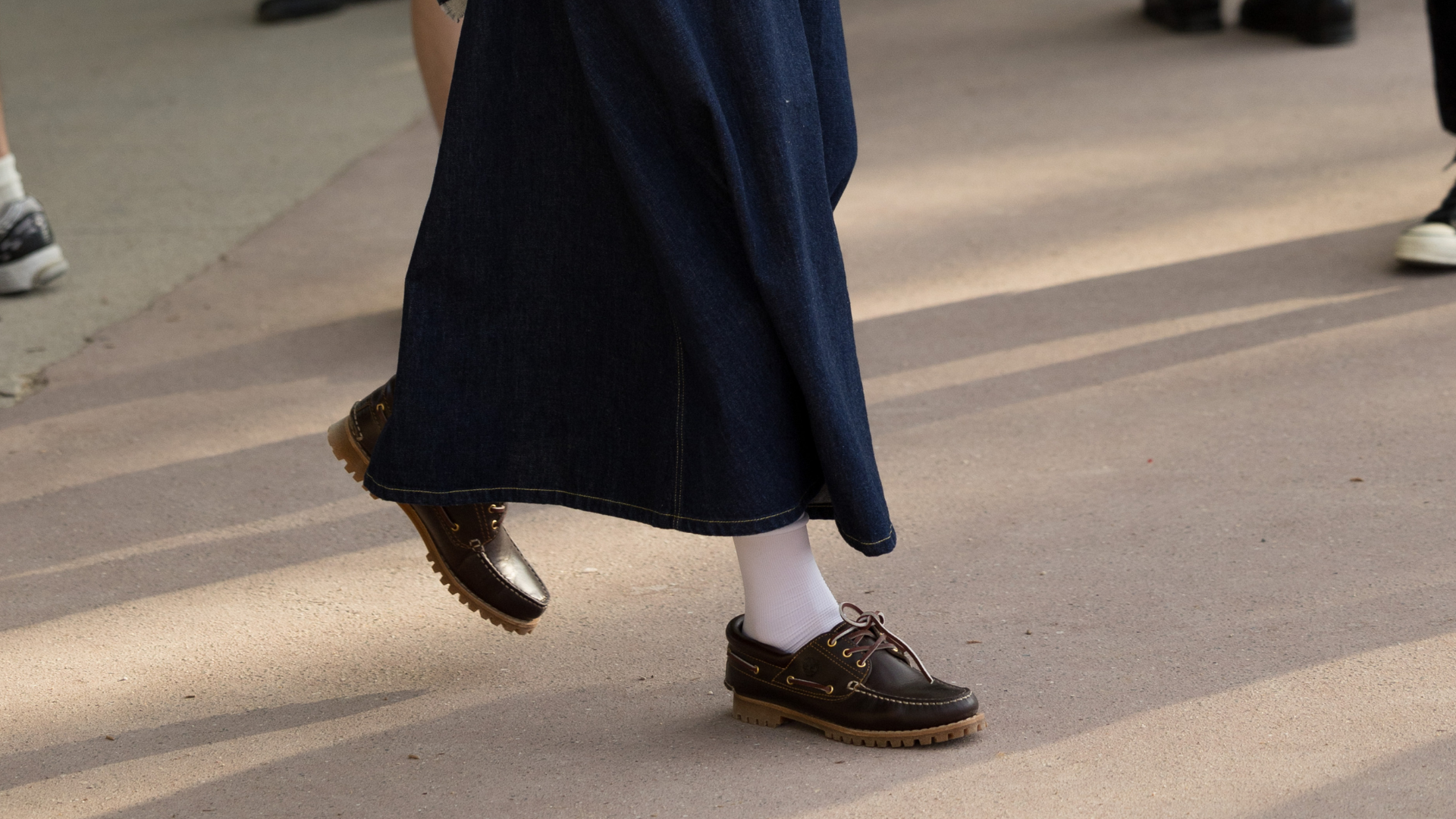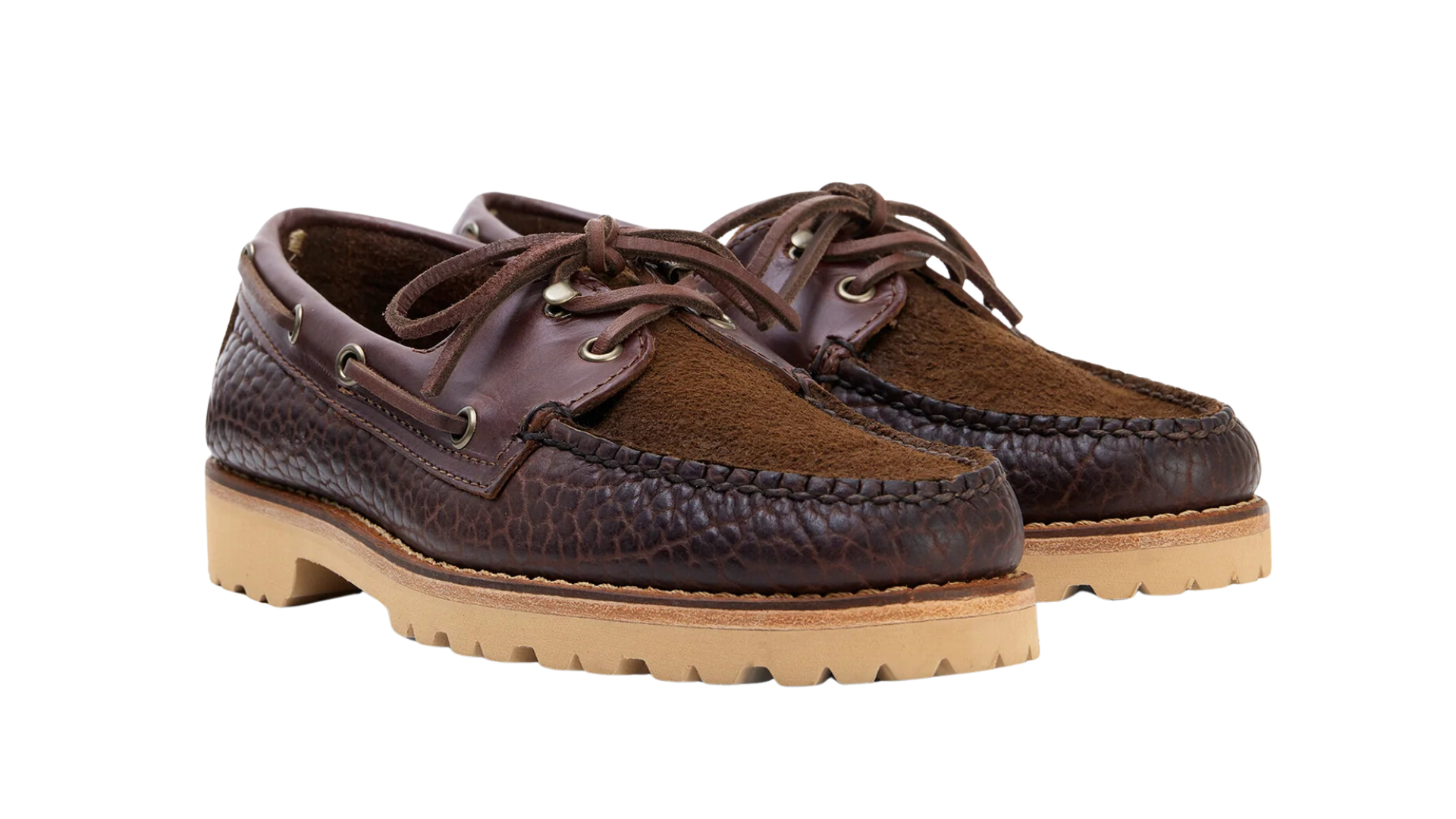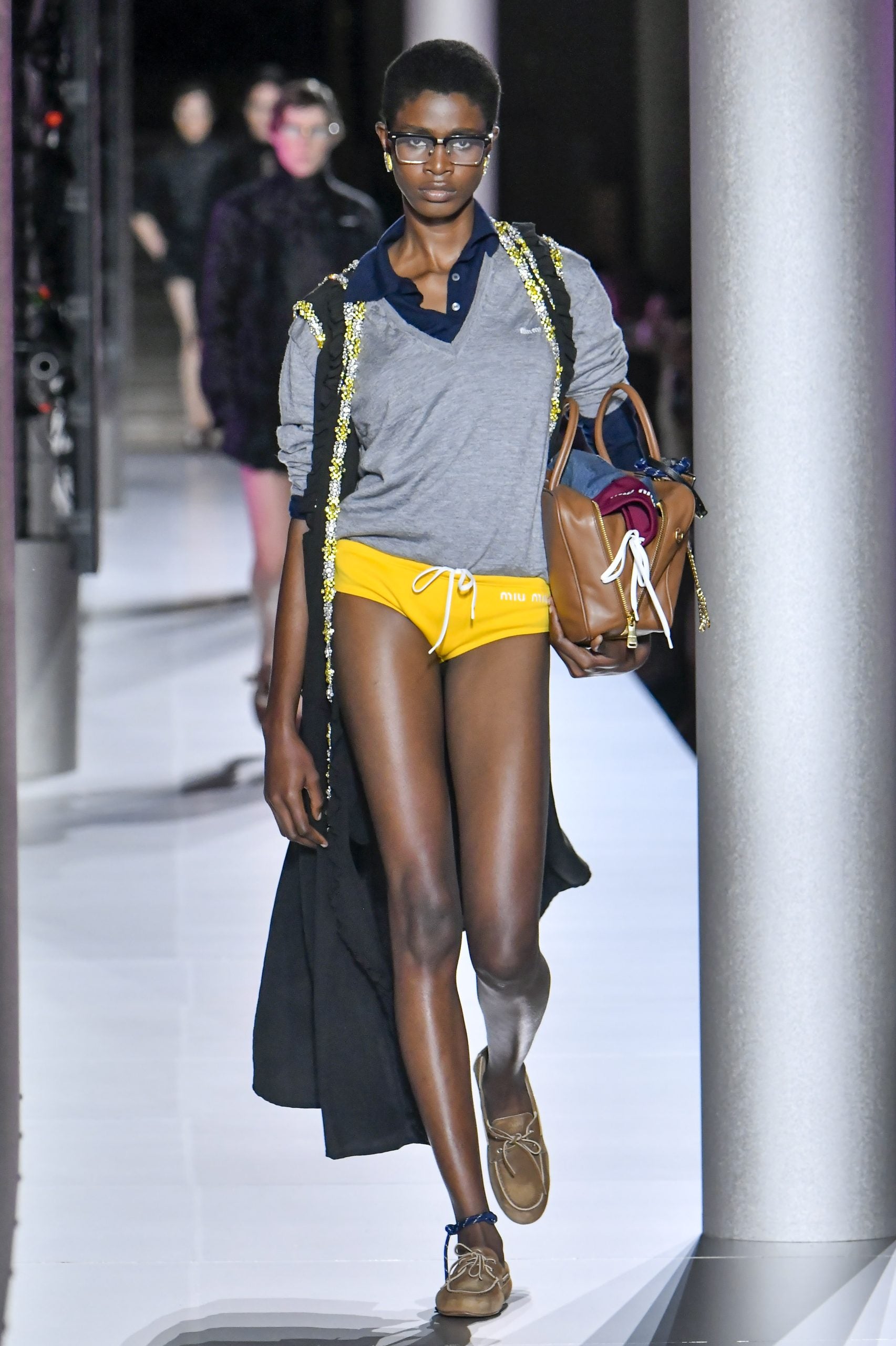
The classic yacht shoe has made its way back into the fashion fold. From the looks of my For You page on Instagram, if consumers aren’t posting about how much jellies are worth paying for, they’re showing off how bold they are for dusting off their Sperry top-siders for wear.
The traditional boat shoe is derived from the moccasin, one of the two oldest forms of footwear next to sandals dating back to the Paleolithic. Then, they were made out of a range of animal skins and adorned to denote something about the wearer and their culture. Native American tribes in particular have a hand in the history and cultural significance of the style.
In the 1930s, Sperry introduced a version of it that resembled something of a sneaker-loafer: a rubber sole, leather-uppered-and-laced with two eyelets and a moccasin silhouette. Typical of classic clothing, the boat shoe has ties to the military, becoming the U.S. Navy’s official shoe in 1939. More common in our imaginations is the aesthetic that John F. Kennedy popularized a couple of decades later, lending it a distinctly New England character and a mainstay in American fashion.

Indeed, the moccasin-style shoe is far from trendy. Even before it “returned,” it was still heavily worn in some menswear circles. It wasn’t a thing to wear them per se, it just was a shoe. “It’s still a classic and has stuck around for a reason,” Throwing Fits podcast co-host Lawrence Schlossman tells me. “There’s definitely been some trickle-down because of the runway,” he adds. “It reframes a lot of general points of view.”
Jordan Page, menswear expert and founder of Colour Plus Co. agrees that you cannot talk about the history of boat shoes without discussing Sperry. He believes that this brand more or less created, innovated, and cornered the market on boat shoes worldwide. “In a certain American class, the class that could afford boats, the shoe never really went away,” Page shares in an email. He also notes that the current growing interest is an evolution of the popularity of hard-bottom shoes, particularly penny and tassel loafers–he’s noticed this for the past six to seven years in men’s fashion.
Additional proof of the trickle-down effect of the trend: Chris Echevarria, founder of Blackstock & Weber who also recently opened a conceptual storefront in Soho released a now sold-out Sperry collaboration in January. His iterations reimagined two classic Sperry designs, the Captain’s Oxford and the Authentic Original Boat shoe.

Brands like The Row, Miu Miu, and Fendi recently showed boat shoes in their collections, which, for most of us, would be reason enough to consider slipping our foot into something that might evoke images of a White greek organization or what we wore as teenagers. Schlossman notes them being part of a cultural uniform during his fraternity days at Wake Forest University. He acknowledges that it can be easy to ascribe the boat shoe to upper-class, out-of-touch white men.
You could say that about a lot of the clothes we wear, especially in the United States. But how effectively you can spin a thing has always been more relevant in fashion. The same could be said for consumers at large. And however classic and adaptable, something about the shoe has always been slightly dorky to me. Or ripe for quirking. I’m thinking about some red Sperry’s I wore with a pair of seersucker trousers on my first day at the arts magnet high school I’d started attending. Looking back, that was a pretty clown-ish look (although I couldn’t have been convinced out of it at the time).

A savvier example of the subversive potency of the boat shoe is Pharrell Williams. Back in 2014, he was photographed by GQ wearing a pair of sky-blue Del Toros with white laces and soles. Williams was also in his infamous brown, towering Vivienne Westwood hat, a green and navy blue striped henley, and layers of waist-length necklaces. More casually, he’s worn green ones with denim shorts, a camo henley, and a neckerchief. Those pictures are as good today as they were ten years ago, “[This was] when boat shoes were having a similar kind of moment in the sun,” Schlossman recalls.
We can count on hip hop to unburden clothes of the connotations that often make them appear uncool. I know what you’re thinking, “Yeah, he’s Pharrell! Of course, he does!” Really, though, all you have to do, as the artist has shown and as Schlossman suggests, is “just wear it like you would wear any other pair of shoes like you would on a regular Saturday.”
And if you need more reason to not think about them as anything other than what they essentially are (a shoe), Sperry’s’ all-black originals are refined and blendable–a great starter option. This past Saturday, I noticed Dover Street Market London styled Miu Miu’s boat shoes with a trucker jacket over a yellow, ribbed tank and a mini skirt. You could do that but make it more Miuccia. Or hide them—HIP Manchester styled a pair of brown ones with baggy pants that cover nearly half the shoe.
Luxury labels can be a useful reference for how to wear them fashionably. But you need not break the bank dipping your toe into the boat shoe’s waters. Schlossman names Morjas, Saman Amel, and Sperry as brands with more affordable options that are worth the buy.
“There is some resistance to this resurgence, as more preppy brands that aren’t Ralph Lauren, tend to have detractors in high fashion and streetwear, but I am a big believer that almost anything can look cool and tasteful if styled well,” Jordan shares.
Fantastically proving the steady rhythm of this particular footwear design as a trend, Page declares that a boat shoe capsule between Sperry and Colour Plus Co., his company will be released next spring. “We will certainly see more high-end and streetwear brands entering the boat shoe chat in the next couple of years,” he adds.





